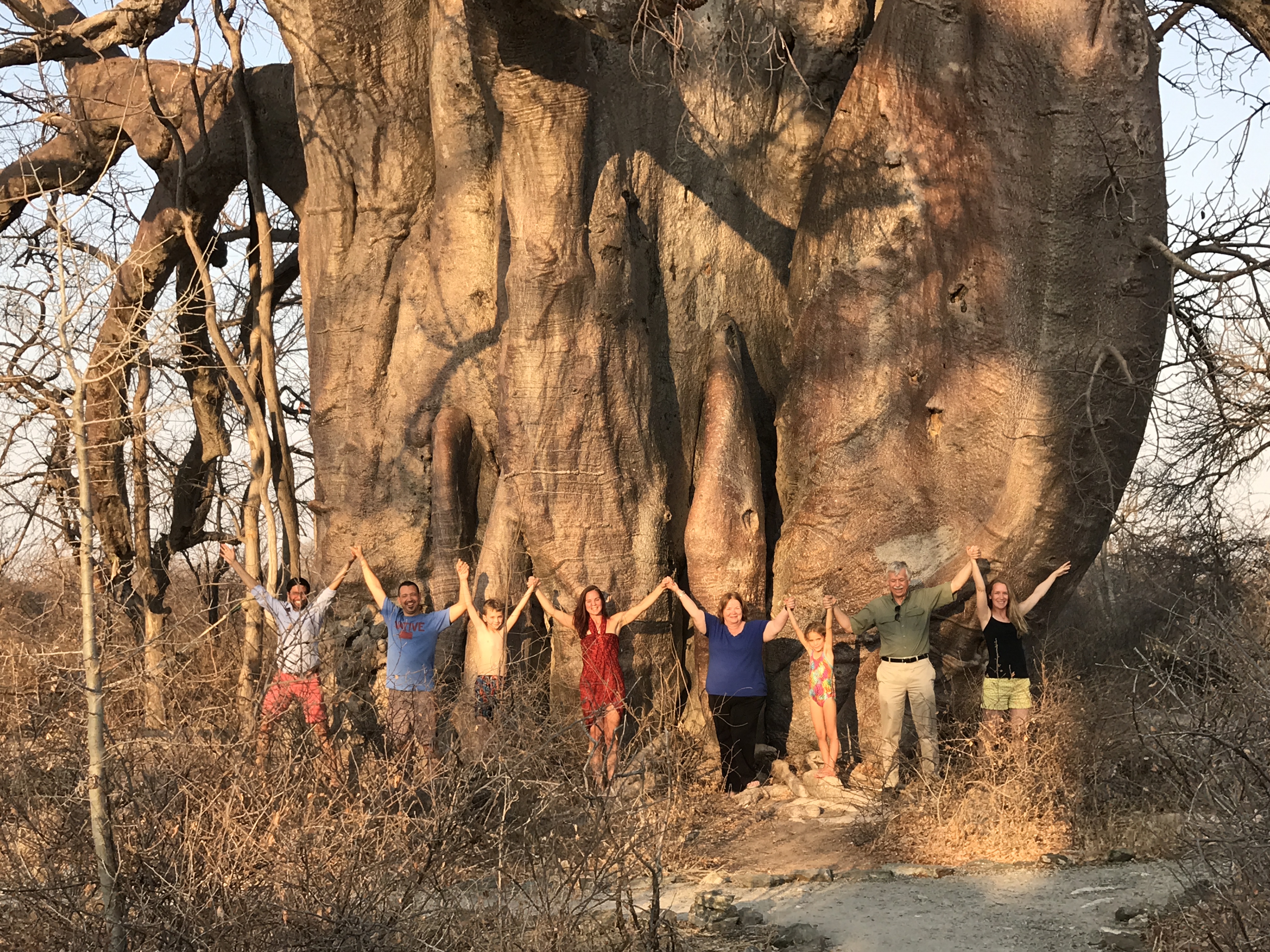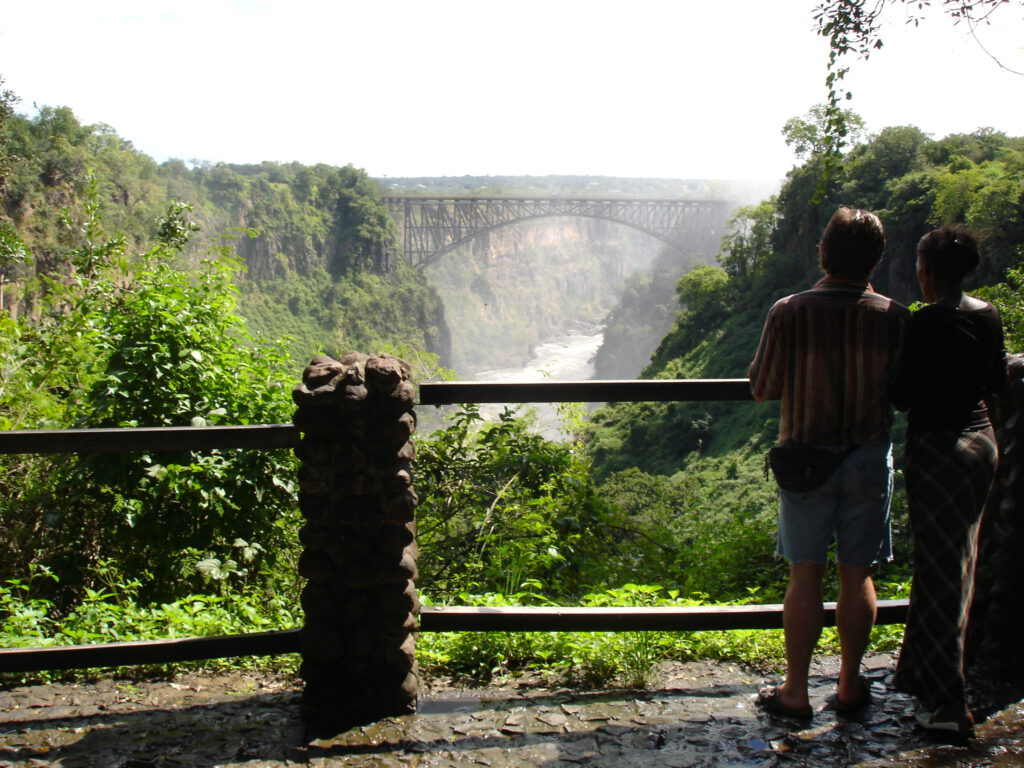It’s the baobabs that will follow you home. Mysterious, massive, silent, on gnarled pillars they dominate the Kalahari thorn scrub, and the imagination. Ancient beyond telling, they are the grand elders of Africa’s arid hinterland, sentinels of the passing millennia. Now they’re dying. And no one knows why.
news.nationalgeographic.com/2018/06/oldest-tress-africa-baobabs-dead-climate-science/
The San say that the creator allotted a tree to each living creature. Last of all came the hyena who received the baobab. So displeased was he that he planted it upside down, its broad canopy buried in the Kalahari sand and roots forever reaching to the sky.
But the baobab feels no chagrin. Indeed, life in profusion gathers around these landmarks. Tiny weavers sling their nests from the branches. Creatures browse below on pod-like fruit. The San, masters of the desert, know the secret interiors where rainwater gathers. Travelers, including the likes of David Livingstone, have left their names carved on the trunks. Herds of elephant, themselves dwarfed by the scale of such trees, scrape the semi-succulent bark with their tusks in search of precious moisture. And local lore remembers the hollow trunks serving as jails, letter drops, bus stops and hideouts.

a thousand years old. Its age and capacity to survive in such harsh conditions
makes it a wonder not only of Africa, but of the world. The writer (second from right) and his extended family fail to girdle even half of the tree’s girth. The baobab
reigns as superstar of the safari scene.
The je-ne-sais-quoi of baobab country has also attracted celebrity. Richard Burton and Liz Taylor sent journalists scurrying for atlases in 1975 when a news flash announced they were married – again. This time on the banks of the Chobe river. (Unlike the trees, though, it wouldn’t last. It was a doomed love. Within nine months it all fell spectacularly apart.) Prince Charles, too, had come to the baobab groves with his spiritual guru, Laurens van der Post, seeking the clarity and peace of the desert. And somewhere in an unannounced corner of the Kalahari Prince Harry and Meghan Markle were dreaming dreams of a life together that soon dazzled a world audience. The baobabs know the secrets, but they’re not talking.
Our family too, a decidedly non-glitterati party of six adults and two small children, set out recently for this hinterland where the majestic trees hold court. From Gaborone (Ha-boh-roni), the charming capital of Botswana made famous in Alexander McCall Smith’s whodunits, we ventured northeast, crossing the Tropic of Capricorn in a rented van to a little-frequented corner of safari country: the remote Tuli Block, valley of game farms and nature reserves along the Limpopo river. Twilight set in as we negotiated a beastly stretch of gravel road. Within the gauzy glow of head lamps, a bull elephant rose up from nowhere like an apparition, shaking its great head, ears flapping as though to serve notice that we had crossed now into the domain of the wild. And moments later we came upon a rhino, bathed in winter dust, that started and bolted into the darkness.
A preceding summer of generous rains (the southern hemisphere counts December-March as its summer) had slashed washouts all along the route leaving us to pick our way across the stony aftermath. Night fell long before we arrived at the Limpopo River Lodge, a cluster of thatched, riverside cottages. Somewhere a leopard coughed in the darkness as we knocked to announce ourselves. Lamp light illuminated the worry of staff who whispered and scurried to settle us. So day ended with a furtive supper, and then that age-old scene of firelight flickering on a circle of figures bent with murmurs to an open hearth. While all around: the depth of night, the insect chorus, and – the baobabs, silhouetted against the faint starlight.



I once stumbled upon this quote when musing on the WORLD TREE: “Some scholars suggest that the world tree is programmed into the human mind by evolutionary biology. Theory suggests that human beings are primates, and lived in trees for around 60 million years. The idea of a vast tree as the entirety of the world is thus still implanted in our collective unconscious.[9][10]” Wikipedia — with notes from Burkert W (1996). Creation of the Sacred: Tracks of Biology in Early Religions. Harvard University Press. ISBN 978-0-674-17570-9. I wonder what it might mean to tap into our ancient sense of being AT HOME IN A TREE as we consider how to tend our earthly home. I am deeply grieved for the mysterious demise of ancient baobabs.
Such a canopy – of image and story – to shelter in! I’ll follow up on ‘Creation of the Sacred’. Gracias for the mention! We’ve crossed paths with David Haskell lately – ‘The Songs of Trees’. A scholarly inquiry and lyric meditation on specific trees around the world that he regularly visits, including a random Bradford pear in NYC which others disdain as an invasive species, but for which he has deep affection. (We are, many of us, ‘invasive species’!)
What a lovely virtual conversation! I am still learning “blog,” and happened upon your message. Glad for it. I googled “jubilacion” — Spanish for retirment — and who comes up but Shirley Showalter — in Forbes! I am claiming it and will only have to decide if I say I am “morphing iinto jubilee” or “my job is jubilee.” I like the joy and ethics mix of jubilee. https://www.forbes.com/sites/nextavenue/2017/01/10/a-better-way-to-say-im-retired/#180742ac7c7b